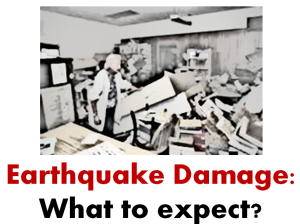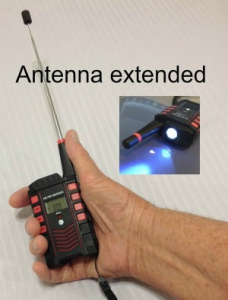An Ongoing Threat

Where and how?
The March 26, 2015 massive explosion and fire in New York’s East Village caused the collapse of three buildings and fire damage to a fourth — a reminder that natural gas continues to be a threat, particularly where the gas lines are aging – as they all are!
At one of your Emergency Response Team meetings, I’m sure you’ve discussed the threat posed by natural gas. If you haven’t, or if it’s time for a review, here are some questions to start the conversation.
1. Where are gas lines located in our neighborhood and building?
Large-diameter transmission lines may run near or even through your neighborhood, with smaller-diameter distribution lines connecting to individual residences or buildings. You should be able to get from your gas company a map showing the transmission lines. Getting maps showing smaller distribution lines may be more difficult. (In our case, we were able to get original construction drawings from the city. They show the exact location and size of our gas distribution lines.)
2. Where are shut-off valves located?
The gas utility, gas system operator and/or property owner may not want to reveal exactly where shut-off valves are located, mostly because they don’t want to invite mischief or sabotage.
However, from a SAFETY standpoint it is imperative for First Responders to know how to shut the system down in an emergency. A strong neighborhood CERT group can get this information.
Shut-off valves may be located at the individual home, at the building, at the street, and in other places along the system.
We recently had a visit from the crew of our nearest fire station. It was a shock for us to learn that they did NOT know exactly where our gas main shut-offs are located!
3. How do our shut-off valves work?
As a neighborhood group, you may be limited to what you can really do in your community. However, to the extent that you do know where lines and valves are located, you should find out what it takes to shut the gas off.
Review the different types of shut-off valves in your vicinity.
- Automatic? Some valves, like seismic gas shut-off valves, operate automatically. However, such valves are not required and you probably don’t have any on your system.
- Appliance? Within the home, individual appliances may have their own shut-off valves.
- Entire home? In an emergency, shutting off the gas to the home likely means shutting it off at the meter. To do this, you’ll need a wrench and an understanding of the ON vs. the OFF position of the valve. (See earlier post.) Your turn-off may look like the one in the picture, or it may resemble a regular garden hose faucet handle.
- Gas main? When it comes to shutting off gas at a larger line, the shut-off may be a larger version of the wrench turn off, or it may operate with a large wheel and gear.
Are any of the valves locked?
Naturally, if a gas valve is locked, no one except the operator may be able to access it. In a widespread emergency (earthquake) this could be an added problem.
In the Northridge Quake of 1994, managers of an affected mobile home park saw that gas escaping through the streets was being ignited by cars of residents evacuating the park. Unfortunately, management was unable to break the lock to turn off the gas at the main so it continued to fuel these fires.
4. What procedures are in place for shutting off the gas?
In an emergency,
- Who is authorized to shut off the gas?
- Which valves are they authorized to shut off? Remember, the gas utility probably “owns” the system up to the meter; you, as property owner, own everything on the house side of the meter.
- What training do these authorized people receive?
- How likely is it that authorized and trained people will be on hand in an emergency, when immediate action may be required? In a widespread disaster, Fire fighters may not reach you immediately; representatives of the gas company may also be delayed, perhaps indefinitely.
In the deadly 2010 explosion and fire in San Bruno, California, it took the gas company over 60 minutes to get the gas shut off!
5. What exactly are the dangers associated with natural gas?
The gas distribution system has thousands of miles of pipeline that operate safely nearly all the time. However, when there is a failure, it can result in a dramatic explosion and fire. Failures result from the following:
- Pressure. The first concern of the system operator is to maintain the appropriate pressure in the system based on the size of the pipes and the number of connections to it. (The more connections, the more pressure needed to deliver the gas.) As communities grow, and more connections are added to the system, the Maximum Allowable Operating Pressure (MAOP) may need to be adjusted.
- Pipeline failure Leaks and breaks occur when old pipes fail due to corrosion, improper welds or joins, improperly installed equipment, too much pressure – or as the result of natural events such as an earthquake.
- Leaks Just because your system is old doesn’t necessarily mean it is in danger of failing. And just because a gas leak is detected doesn’t mean you are in imminent danger. However, when a leak is identified, you need to act quickly and decisively. What you need to be concerned about is a build-up of gas around a leak or as the result of gas “migrating” to an area where it gets trapped, such as in a basement, under a house, etc.
CERT Action item #1: Learn the signs of a gas leak and know how to respond. Start by reviewing this Emergency Plan Guide Advisory, and then research and distribute gas line safety bulletins that you can get from your own local gas utility.
CERT Action item #2: Find out how often and what kind of system testing (pressure, cracks, etc.) takes place in your area.
One of our most effective guest speakers was a representative from the Fire Department who talked about the various gas lines in our neighborhood. (We have the usual mains and feeder lines PLUS a high-octane aviation fuel line running beside our community.) See if you can set up a speaker from your own fire department or local utility.
Your invitation will cause that Fire Official to update his or her knowledge about your neighborhood, as well as remind your neighbors to be more alert. Every bit of knowledge helps!
Virginia Nicols
Your Emergency Plan Guide team
Looking for more information on gas lines? Check out these Emergency Plan Guide Advisories:
Want to get a reminder once in a while to help you stay tuned in and up to speed on the latest preparedness issues? Sign up for our Advisories, below. They are free.



 Do you have what you need?
Do you have what you need? Keeping CERT Training Interesting With a “Movie Night”
Keeping CERT Training Interesting With a “Movie Night”






 You have three first-aid kits, don’t you? One in the house, one in the car, and one in your emergency backpack?
You have three first-aid kits, don’t you? One in the house, one in the car, and one in your emergency backpack?





 The only one we have found that is consistently reliable, affordable and the right size is the
The only one we have found that is consistently reliable, affordable and the right size is the